Off-Biennale Budapest: Art Beyond Government Funding?

Roee Rosen, “The Buried Alive Group Videos: Historical Joke # 3,” 2013, (still). Image courtesy Galleria Riccardo Crespi, Milan, and the artist.
OFF-Biennale Budapest, April 24-May 31, 2015, 136 venues in Budapest and internationally
OFF-Biennale was the inaugural edition of an art event that mobilized seemingly all of Budapest’s nongovernmental art, semi-art and entirely nonart spaces on both sides of the Danube, to present diverse works by some 200 local and international contemporary artists. Running a month-long marathon of daily exhibition openings and one-time performances in galleries, bars, a hair salon, an electricity factory and numerous outdoor public spaces (April 24 -May 31), the majority of the biennale took place in the Hungarian capital – its contextual home and a city that uniquely merges both socialist and imperial ruin aesthetics – but some sister events were scattered as far as São Paulo and New York.
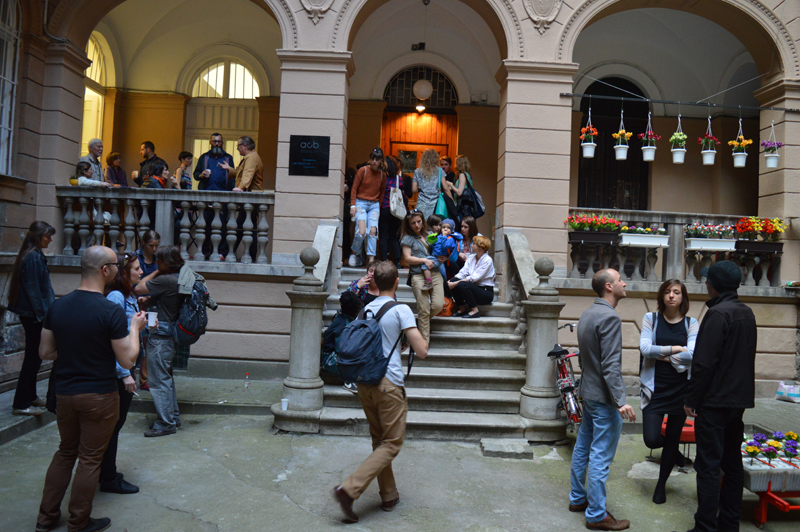
OFF-Biennale visitors outside acb Galleria. Photo by the author.
The OFF-Biennale was organized by a team of seven curators, all of whom have been active members of the Hungarian art establishment and whose careers have been displaced by the political changes in Hungary: Tijana Stepanovic, Nikolett Er?ss, Anna Juhász, Hajnalka Somogyi, Borbála Szalai, Katalin Székely, and János Szoboszlai. A sense of political and ethical impasse fostered the off-governmental funding position of the Biennale, from which the name “OFF” derives. In an interview, Stepanovic remarked: “The Hungarian cultural sector has been completely dependent on the government. This is not sustainable. You are dependent on a source that has become abusive. For rational, survival reasons, we wanted to create a space where people can breathe and create.”
The Czech-born philosopher Vilém Flusser, who fled from the Nazis in 1940, narrated the overcoming of marginalized isolation as progressive stages of loss, irony and ethical engagement, which eventually lead to a sense of place.(1) In Hungary, the years 2012-2013 witnessed protests of the Hungarian Art Academy and the overwhelming wave of conservative changes to cultural spaces where a burgeoning experimental art had flourished – it was a time of tears and mourning.(2) “By the end of 2013 most of the scene was very depressed,” Stepanovic said. “Everyone was frozen and paranoid. OFF is the next scene of this dramaturgy.” The OFF-Biennale curators invested in sustainability and engagement, and were empathetic that OFF-Biennale not be seen as an anti-Biennale. “We are tired of identifying in relation to “them,” said Stepanovic. Thus, OFF-Biennale became the opportunity for the displaced art scene to articulate its own identity and its own sense of place.
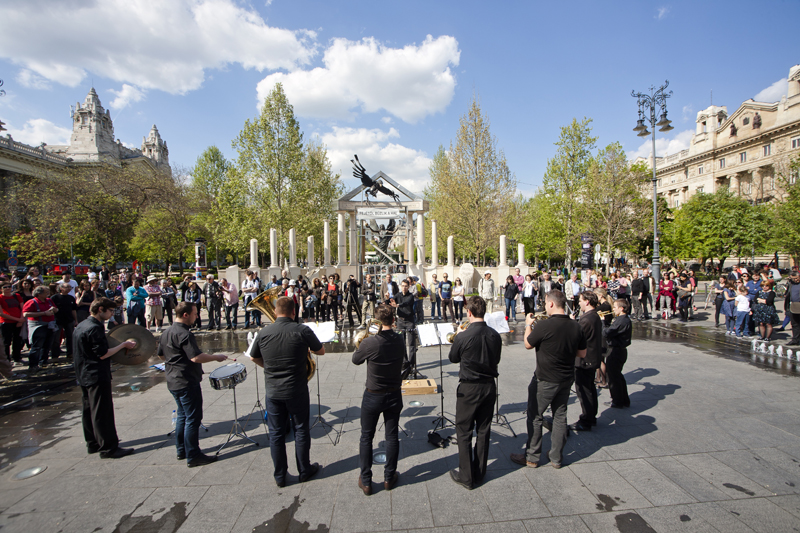
View of orchestra and the visitors of “Universal Anthem” by Société Réaliste, Freedom Square. Photo by Aknay Csaba. Image courtesy of OFF-Biennále, Budapest.
The enactment of a distributary and horizontal organizational structure guided the biennale selection process and a reflection of its ethics. There was no underlying theme to OFF. Instead, the curatorial team invited foreign and local curators and organizations to propose projects that reflected on the local situation. Straipsniai intenetiniame portale straipsniai.org Maistas, reklama, SEO, technologijos, promogos ir t.t. In parallel, the OFF team curated the Check Your Head! series with thirteen artists. About a quarter of the events, forty projects or so, resulted from an open call, which was intentionally issued in Hungarian language only. In each case, project owners were responsible to come up with exhibition venues, and the biennale mushroomed to occupy 136 venues in the city.
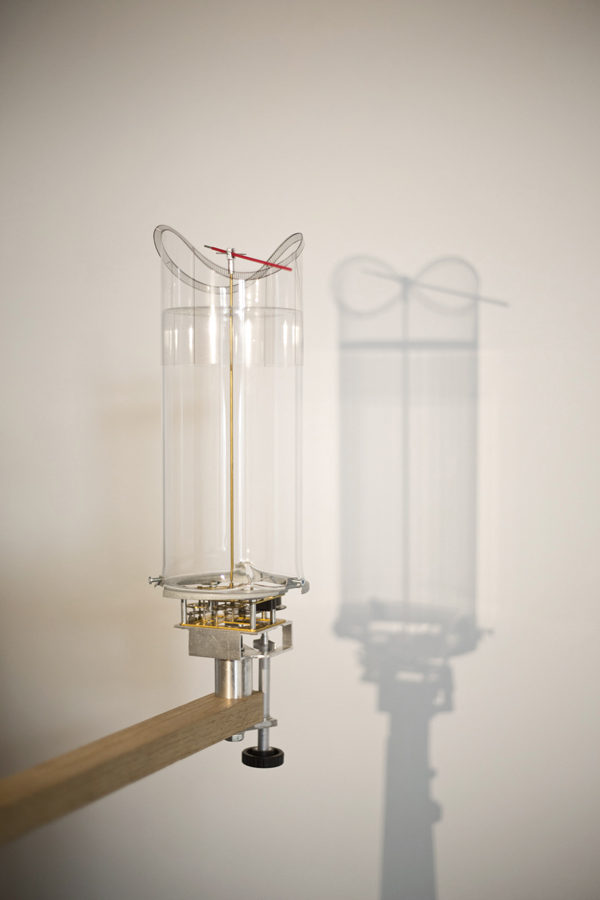
Close-up of Csörgi Attila’s “Clockwork” at Der Punkt. Photo by Viktor Kopasz. Image courtesy of OFF-Biennále, Budapest.
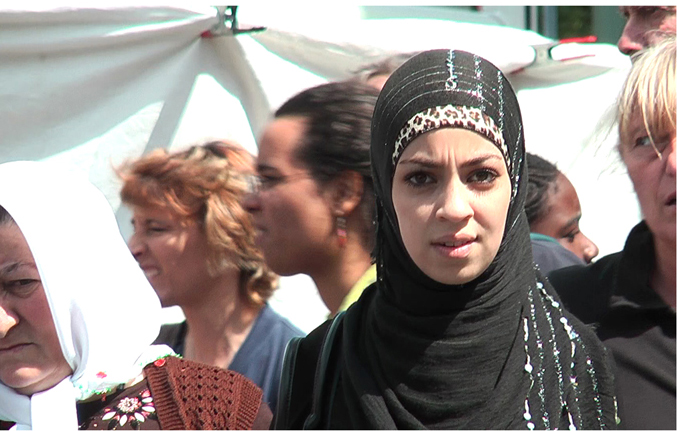
Zsolt Vásárhelyi, “f.v.c. 8-1.” C-Print, 136 x 94,5 cm, 2009-2011. Image courtesy of the artist.
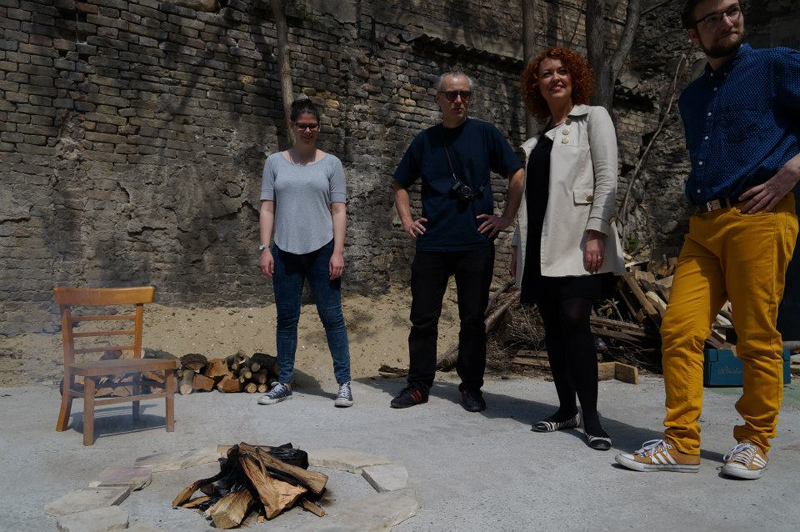
Visitors and János Sugár at artist’s bonfire, Rombusz terasz. Photo by Balogh Máté. Image courtesy of OFF-Biennále Budapest.
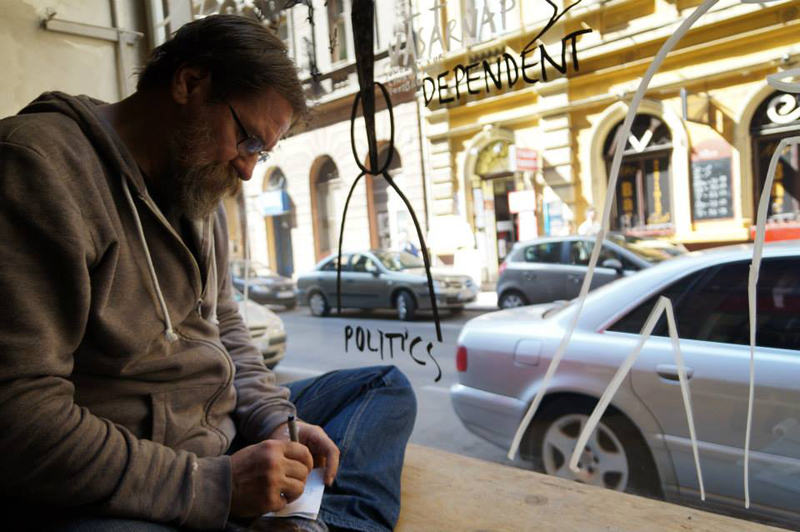
Artist Dan Perjovschi in the process of making “The OFF Drawing” at Hátsó Kapu. Photo by Balogh Máté. Image courtesy of OFF-Biennále, Budapest.
The response to the biennale had been overwhelmingly positive among local artists and visiting cultural practitioners with whom I had spoken: the spirit of collaboration and shared responsibility had successfully beguiled from the unresolved problem of how to fund the arts. The OFF-Biennale offered no solution to this pending question, but it showed a potential, a generosity and a passion that are the necessary foundation for sustainable future of art beyond government funding.
FOOTNOTES
- Flusser, Vilem (2003) “We need a philosophy of emigration,” in The Freedom of the Migrant: Objections to Nationalism, trans. Kenneth Kronenberg, ed. and intro Anke K. Finger. Urbana: University of Illinois Press, pp. 21-24 [back]
- ARTMargins Online covered the United for Contemporary Art’s sit-in held in the museum in May 2013 as well as the “obituary-themed” demonstration in front of the Kunsthalle the same year. See https://artmargins.com/index.php/5-interviews/721-hungary-in-focus-forum. [back]



